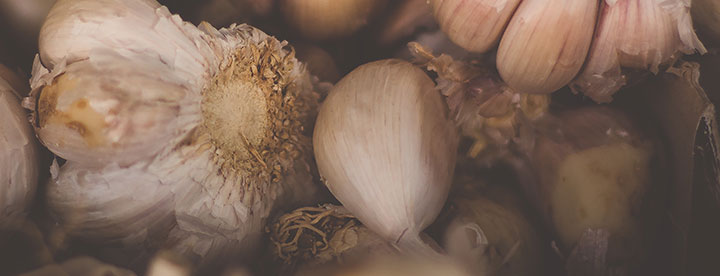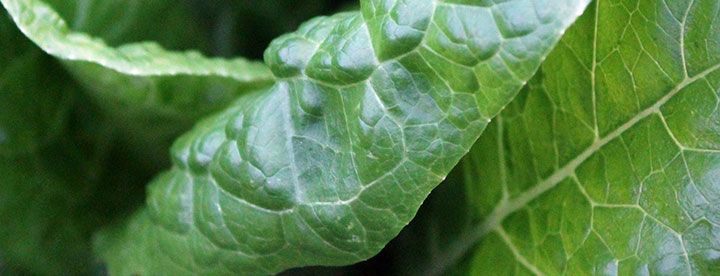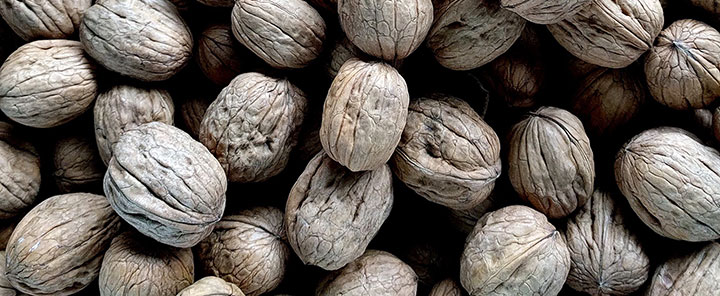“The wise man should consider that health is the greatest of human offerings. Let food be your medicine.” – Hippocrates, philosopher
Foods with super powers? Apparently so. Researchers have defined a group of foods that literally pack a nutritional punch when it comes to health, longevity and disease prevention. We are told that these 10 foods are so exceptionally good for us that we should include them in our diet on a daily basis. So here’s to good health and well-being… and the tastiest ways of getting them.
BLUEBERRIES
Blueberries are rich in antioxidants and anti-inflammatory agents, and can lower the risk of heart disease and cancer. They’re also a good source of vitamin C, and great for a healthy skin. Eat one to two cups a day. Also try: Blackberries, cherries, cranberries, raspberries and strawberries.
HOW TO EAT MORE BLUEBERRIES
Add them to fruit salads and cereals or sprinkle them with sugar and enjoy as is. For a quick smoothie, place 250ml blueberries, 250ml yoghurt or ice cream, some ice cubes and sugar or honey to taste in a blender and process.
DRIED BEANS
Beans are high in fibre and protein, and low in fat. They are considered low on the glycaemic index (GI) because they release energy slowly and thus stabilise blood sugar levels. The compounds found in beans have been shown to keep normal cells from turning cancerous and inhibit their growth. Beans are also known to lower cholesterol, fight heart disease and relieve hypertension. Try to eat one cup of beans four times a week. Also try: Chickpeas, lentils and peas.
HOW TO EAT MORE BEANS
Add them to soups and stews, enjoy the proverbial baked beans on toast, toss them in your favourite salad or fill them in baked potatoes and pita bread with flavourings of your choice. For a quick salad, mix together 1 grated carrot, 1 sliced red pepper, 1 x 410g can butter or cannellini beans, 1 x 200g can tuna in brine, ½ chopped red onion and 60ml of your favourite dressing.
GOOD TO KNOW
Dried or canned beans will give you the same benefit, but canned beans are high in sodium so be sure to drain and rinse well.
BROCCOLI
Research has shown that if you eat broccoli or any other cruciferous vegetable every day, you halve your risk of cancer. Broccoli is also an excellent source of vitamin C (it has more than double the amount of oranges), and helps to prevent heart disease. Broccoli also gives a good fix of beta carotene, vitamins B1, B2, B3 and B6, potassium, calcium, folic acid, and zinc, and are an excellent source of vegetarian iron. Also try: Bok choy, Brussels sprouts, cabbage, cauliflower and turnips.
HOW TO EAT MORE BROCCOLI
Broccoli is great in salads, bakes (with cauliflower and white sauce) and soups. Steamed broccoli tossed with olive oil and sprinkled with sesame seeds is delicious! For a fabulous, quick salad, steam or boil 500g broccoli, drain well and serve with 1 sliced avocado. Whisk together a dressing of 50ml extravirgin olive oil, 30ml lemon juice, 15ml grainy mustard and salt and pepper to taste.

GARLIC
When used liberally, garlic decreases the risk of cancer and according to world renowned nutritionist Patrick Holford in The Optimum Nutrition Bible, garlic eaters have the lowest incidence of the disease. It also contains allicin, a substance that is anti-viral, anti-fungal and anti-bacterial, making garlic an infection-fighting super food. Regular consumption also lowers cholesterol. Have a clove or capsule a day, more if you’re fighting an infection.
HOW TO EAT MORE GARLIC
If you’re going the raw garlic path, add it to pestos and hummus. To make aioli, process 6 peeled garlic cloves in a food processor. Add 2 large egg yolks and 10ml Dijon mustard. Slowly pour in about 250ml extra-virgin olive oil, and add 15ml lemon juice and salt and pepper to taste. We can’t think of many savoury dishes that don’t go well with cooked garlic – it can be used in pasta sauces, soups, chicken, meat and seafood dishes, dips, spreads and toppings. To prepare baked garlic (excellent with bread, or puréed after baking), place a head of garlic on a piece of foil on a tray and drizzle with olive oil. Enclose it in the foil and roast at 200ºC until it is soft and lightly browned.
GOOD TO KNOW
Cooking tends to tame the therapeutic benefit of garlic’s allicin, so to get the maximum advantage, use it raw whenever possible (in salad dressings, for example), or add it close to the end of cooking. To make garlic less pungent, soak it in milk before use.
OATS
High-fibre oats have a low score on the glycaemic index (GI), which means they can help keep blood sugar levels steady – great for diabetics and weight-reduction diets. They also contain beta glucan, which can help lower blood cholesterol levels, thus reducing the risk of heart disease and strokes. Research has shown that one bowl of oats a day can reduce cholesterol by up to 23 percent. Also try: Barley, millet, quinoa, rye and wheatgerm.
HOW TO EAT MORE OATS
A bowl of cereal with oats in the morning is the easiest way of incorporating this super food into your diet. For a super breakfast or dessert, top any fresh fruit with yoghurt or crème fraîche, sprinkle with a few tablespoons of rolled oats and drizzle with honey. If you’re baking health or wholewheat bread, crunchies or crumble toppings, add some oats. To make Bircher muesli, soak 500ml rolled oats and 250ml apple juice overnight. Add 3 grated green apples, 175ml plain yoghurt and 5ml cinnamon. You can also add chopped nuts.
SALMON
Salmon is low in saturated fat and high in protein, and has a unique type of health-promoting fat, omega- 3 essential fatty acids. These are vital for human health but because they cannot be made by the body, they must be obtained from foods. The omega-3 fats found in salmon have super heart benefits: they help to prevent erratic heart rhythms, make blood less likely to clot inside arteries, and improve the ratio of good cholesterol to bad cholesterol. Eat salmon two to four times a week. Also try: Herring, mackerel, sardines, trout and tuna.
HOW TO EAT MORE SALMON
Add slices of smoked salmon to scrambled eggs or toasted brioche, or make a sandwich with health bread, slices of smoked salmon, cottage cheese, sliced spring onion and sprouts. Salmon is delicious grilled with soy sauce and honey; a dukkah rub, or with lemon juice and black pepper. For a sweet-sour salmon dish, heat 60ml soy sauce, 45ml white wine vinegar and 60ml clear honey. Add 1 finely chopped chilli and a grated piece of ginger, and when cool, pour it over the salmon. Marinate for up to half an hour, and grill the salmon in the sauce in the top part of the oven for about 4 minutes on each side.

SPINACH
It might not give you Popeye-like strength, but spinach’s super weapon, lutein, prevents cataracts and blindness in the elderly. It also lowers the risk of cardiovascular diseases, and a variety of cancers. Try to eat one cup of steamed spinach or two cups of raw spinach each day. Also try: Bok choy, kale, cos lettuce and Swiss chard.
HOW TO EAT MORE SPINACH
Incorporate spinach into stir-fries, and use in salads. Spinach goes well with Feta cheese, couscous, sundried tomatoes and toasted seeds. For a super starter, boil 500g torn spinach for 3 minutes, then drain. Remove the excess water, and pour over 30ml extra-virgin olive oil, 15ml balsamic vinegar and salt and pepper to taste.
GOOD TO KNOW
Baby spinach is a lot sweeter than ordinary spinach, so you might prefer to include it in your dishes.
TOMATOES
Tomatoes contain large amounts of vitamin C, providing 40 percent of the daily value. They also contain vitamin A, potassium and iron. The super element in tomatoes though is lycopene, a powerful antioxidant that neutralises free radicals that can damage cells in the body. Studies conducted by Harvard researchers have discovered that men who consumed 10 servings of tomatoes a week, or the equivalent to 10 slices of pizza, can cut the risk of developing prostate cancer by 45 percent. Tomatoes are also known to lower the risk of other cancers, and slow down degenerative diseases. Eat a tomato a day. Also try: Persimmons, pink grapefruit and watermelon.
HOW TO EAT MORE TOMATOES
Sandwiches, salads, sauces, pastes, soups, pizza – tomatoes are a brilliant base and addition to so many foods. They are great roasted, go well with basil, onion and cheese, and make a refreshing juice (simply process or juice) – add a dash of Tabasco sauce for some zing. In Marie Claire Kitchen, food writer Michele Cranston presents a fabulous tomato salad or starter recipe: Put 90g roughly chopped coriander in a bowl with 1 finely diced red onion, 2 large seeded and finely chopped chillies, 5ml sea salt, 45ml olive oil and 15ml balsamic vinegar. Toss together and scatter over sliced tomatoes that have been arranged on a plate. Great with seared tuna or Ricotta.
TURKEY
Turkey is a super source of protein and is very low in saturated fat (less than 3g per 100g). Turkey is also a good source of the trace mineral selenium, which helps to protect free radicals and carcinogens, promotes a healthy heart, reduces inflammation and stimulates the immune system to fight infection. Turkey is also a good source of another cancer-protective nutrient, the B vitamin niacin. Also try: Skinless chicken breasts.
HOW TO EAT MORE TURKEY
Add turkey to salads instead of chicken, use it instead of ground beef in chilli con carne recipes, make burgers or meatloaf with ground turkey, or prepare a fabulous sandwich with sliced or shaved turkey, pickled cucumbers, mustard, carrots and tomato. One of our favourite recipes is Gordon Ramsay’s bang-bang chicken, which can substitute turkey for chicken. Whisk together 250g smooth peanut butter, 25ml sweet chilli sauce, 75ml sesame oil and 85ml vegetable oil in a heat-proof bowl and warm them gently over a saucepan of simmering water. Lay leaves of 1 baby gem lettuce on a platter and place 4 thickly sliced smoked turkey breasts on top. Scatter a peeled and julienned carrot, red onion, and 3 trimmed and julienned spring onions around the chicken and spoon the warmed sauce over. Sprinkle with toasted sesame seeds.

WALNUTS
This delicious nut is an super source of omega-3 essential fatty acids. Omega-3s protect the heart, promote better cognitive functioning and have anti-inflammatory benefits. In addition, walnuts contain an antioxidant compound called ellagic acid that supports the immune system and appears to have several anti-cancer properties. Eat a tablespoon each day. Also try: Almonds, cashews, hazelnuts, macadamias, pistachios and seeds.
HOW TO EAT MORE WALNUTS
Add walnuts to steamed vegetables, stir-fries and salads, or sprinkle crushed walnuts over cereals, smoothies, yoghurt or ice cream. They are also great in poultry stuffings and breads. For a delicious salad, grill 3 sliced and cored pears on a griddle pan. Toss the pears with 500g mixed salad leaves, mix in 60ml halved walnuts and dress with a vinaigrette, or a mixture of 30ml honey and 45ml lemon juice. You can also add Parmesan shavings or blue cheese.
GOOD TO KNOW
Essential fats like omega-3s are easily damaged by light or heat. For maximum health benefits they should be refrigerated and only eaten raw if possible.
RESEARCH SOURCES
http://channels.netscape.com
http://ezinearticles.com
www.whfoods.com
The Healthy Kitchen by Dr Andrew Weil and Rosie Daley
The Optimum Nutrition Bible by Patrick Holford









